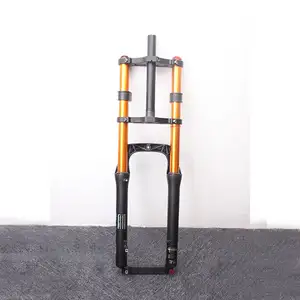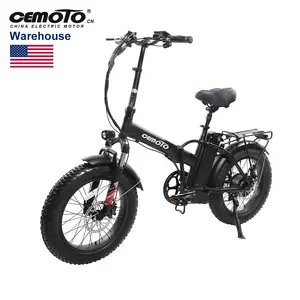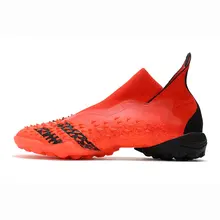The Essence of the Bicycle
The bicycle, a timeless mode of human-powered transport, has evolved through the ages to cater to various needs and tastes. Its fundamental components include a frame, two wheels, pedals, handlebars, and a saddle, with optional enhancements such as gears, brakes, and illumination. Bicycles are embraced by a broad spectrum of enthusiasts, from youngsters mastering the art of cycling to adults who commute or seek leisure on two wheels.
Operating a bicycle is elegantly simple: the cyclist's pedaling action rotates the wheels via a chain and gear system. Direction is managed by the handlebars, while braking is typically achieved through hand-operated levers that exert friction on the wheels, enabling the cyclist to decelerate or halt. Bicycles are crafted for streamlined use and efficiency, propelled solely by the energy of the rider.
Bicycles are a boon for both commerce and consumers, epitomizing a sustainable transport solution that encourages physical well-being. Their adaptability is further enhanced by a plethora of custom accessories, augmenting both functionality and enjoyment. The international bicycle market is responsive to a wide array of preferences, offering models suited to varied landscapes, user inclinations, and specific applications.
Bicycle Varieties
An extensive array of bicycles exists, each tailored to particular requirements and riding environments. Below is a synopsis of some prevalent varieties:
-
Mountain Bikes: Crafted for the challenges of off-road paths and tough landscapes, these bikes feature broad, knobby tires for optimal grip, flat or riser handlebars for adept control, and suspension systems to mitigate the jolts from uneven ground. Mountain bikes are available in specialized forms such as cross-country, trail, and downhill, each attuned to the nuances of its respective category.
-
Road Bikes: Known too as racing bicycles, these models are honed for velocity and smoothness on tarmac. They boast slender tires, drop handlebars for a variety of grip positions, and a lightweight build. Road bikes are the quintessential choice for endurance rides, competitive racing, and pleasurable jaunts.
-
Hybrid Bikes: These are the all-rounders, melding characteristics of road and mountain bikes to deliver a ride that is both comfortable and efficient. Typically equipped with a flat handlebar and tires of medium width, hybrid bikes are equally at home in urban commutes and leisurely outings across mixed terrains.
-
BMX Bikes: Engineered for the thrills of extreme sports, BMX bikes boast a robust frame and compact wheels, optimized for executing jumps and tricks. They are a popular choice among the youth, frequently seen at skate parks or urban settings.
-
Folding Bikes: Compact and transportable, these bikes are ideal for city living where space is scarce. They can be effortlessly taken on public transport or tucked away in small dwellings or office areas.
-
Touring Bikes: Designed for the long haul, touring bikes have a durable frame, various hand positions, and come ready to be outfitted with bags or racks. They are the preferred option for cyclists embarking on extensive journeys or commuters who need to transport belongings over longer distances.
Choosing the Ideal Bicycle
For enterprises serving cycling enthusiasts, selecting the appropriate bicycle is paramount. When sourcing bikes for resale or corporate use, factor in the intended purpose—be it racing, daily commuting, off-road exploration, or as part of a business's amenities, such as those offered by hotels or resorts.
The choice of material—aluminum alloy, carbon fiber, steel, titanium, or magnesium alloy—impacts weight, resilience, and price. For example, aluminum alloy combines lightness with strength, ideal for high-performance racers, while steel is prized for its robustness in cityscapes.
Braking systems are a crucial consideration, with a spectrum from basic V brakes to sophisticated disc brakes that provide superior stopping force and adaptability under diverse conditions. Disc brakes are especially advantageous for mountain or off-road bicycles where dependable braking is crucial.
Gearing is pivotal for performance across different landscapes. A wider range of gears offers versatility in varied conditions—such as inclines or rugged terrain—and is advisable for businesses catering to cyclists with wide-ranging needs.
In conclusion, factor in additional attributes that might resonate with your clientele, such as designs tailored to specific genders, integration of smart technology, or the convenience of foldability for effortless storage and mobility.
Bicycles on Alibaba.com
Alibaba.com is a preeminent force in B2B e-commerce, bridging businesses with an expansive network of suppliers that provide a comprehensive selection of products, including premium bicycles for all commercial purposes. With over two decades of experience in international trade facilitation, Alibaba.com has become an indispensable tool for small to midsize enterprises aiming to broaden their reach.
The platform's intuitive interface enables purchasers to sift through options based on precise criteria such as material composition, gear configurations, fork types, and more—assuring a perfect fit for their business requirements. Additionally, Alibaba.com's Trade Assurance program adds a layer of protection, securing payments until the buyer acknowledges satisfactory receipt of goods.
Opting for Alibaba.com for your bulk bicycle needs opens a gateway to a realm where diversity and dependability converge. The platform's commitment to assisting businesses in navigating the intricacies of global commerce positions it as an exemplary partner for procuring bicycles that ensure your fleet operates seamlessly in urban centers around the globe.
Frequently Asked Questions on Bicycles
What materials are available for bicycle forks?
Bicycle forks are fashioned from a variety of substances such as aluminum alloy, steel, carbon fiber, and magnesium alloy, each providing a distinct combination of weight, rigidity, and shock-absorbing qualities to accommodate different cycling scenarios.
How should I select the appropriate fork for my bicycle?
The choice of fork hinges on your cycling pursuits, whether it's mountain biking, road cycling, or casual rides. Take into account the terrain, suspension requirements, and material preferences to align the fork with these specific demands.
Why is fork suspension important on a bicycle?
Fork suspension, like that on a mountain bike or the dampers on a full-suspension model, significantly improves rider comfort and control by cushioning against surface irregularities and impacts.
Are there forks designed for particular bicycle types?
Indeed, forks are customized for various bicycle models, including road, mountain, and electric bikes, with specific attributes such as aerodynamic shapes or sturdy builds to support different cycling styles.
Can I find forks compatible with both disc and rim brake systems?
Most contemporary forks are engineered to accommodate both disc and rim brakes, but it is advisable to confirm compatibility with the manufacturer to ensure optimal function and fit.
What distinguishes a rigid fork from a suspension fork?
Rigid forks lack suspension, offering a lighter and more efficient ride on smooth surfaces. In contrast, suspension forks are equipped with shock absorption features, ideal for off-road cycling where a cushioned ride is preferred.
How do mechanical and hydraulic fork suspensions differ?
Mechanical suspensions utilize the movement of components like bushings and springs to absorb energy, whereas hydraulic systems employ pressurized fluids to dampen vibrations and impacts, resulting in a smoother ride.
Is fork weight a significant consideration?
Indeed, the mass of a fork influences the bike's handling and responsiveness. Lighter forks are typically favored for racing and high-speed cycling, while a heftier option may be more suitable for those valuing stability over speed.
What features are advisable for a racing bike's fork?
For racing bicycles, seek forks with streamlined designs, lightweight materials, and precise steering capabilities to enhance speed and control during competitive events.
How does fork geometry impact a bicycle's handling?
The geometry of a fork, including the head angle and rake, dictates the bike's steering dynamics. A steeper head angle yields nimbler steering for tight maneuvers, whereas a more relaxed angle ensures stability at higher velocities for predictable handling.
What are smart forks, and what is their function?
Smart forks may incorporate electronic elements such as sensors or wireless connectivity, offering data on riding patterns or the ability to remotely adjust settings for improved performance.
What should I consider when choosing pedal types for a bicycle fork?
When selecting pedal types, consider the rider's comfort and the intended use of the bike. Options range from lighter bead pedals to more substantial platform pedals, which provide increased stability.
Why is the electric bike's fork range per power (RPP) important?
The RPP of an electric bike's fork indicates the distance it can cover on a single charge. Select a fork with a suitable RPP based on the anticipated journey length and terrain for your electric bike excursions.












































 浙公网安备 33010002000092号
浙公网安备 33010002000092号 浙B2-20120091-4
浙B2-20120091-4